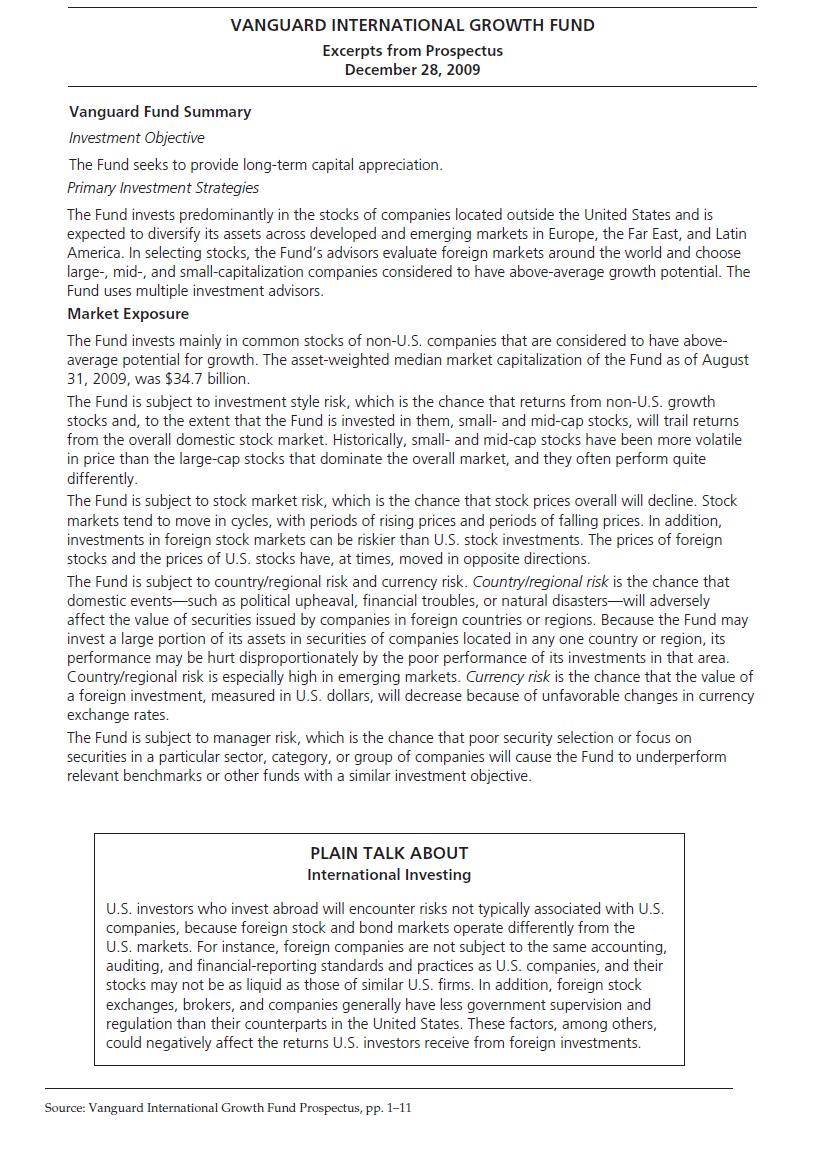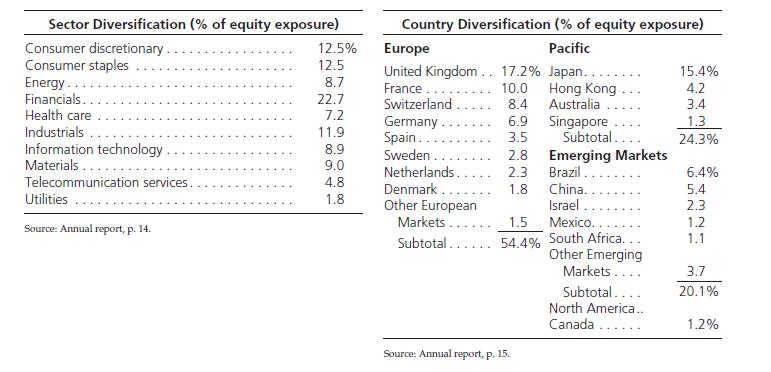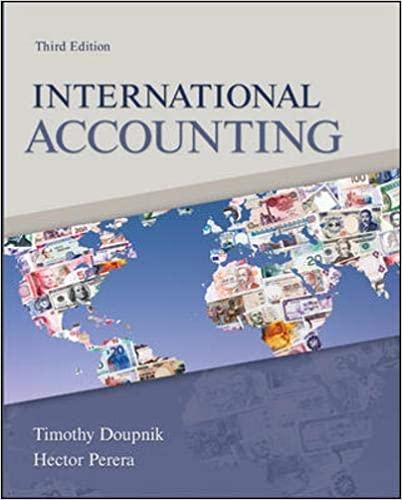Question:
The Vanguard Group is an investment firm with more than 50 different mutual funds in which the public may invest. Among these funds are 13 international funds that concentrate on investments in non-U.S. stocks and bonds. One of these is the International Growth Fund. The following information about this fund was provided in the fund’s prospectus, dated December 28, 2009.

The International Growth Fund’s annual report for the year ended August 31, 2009, indicated that 94 percent of the fund’s portfolio was invested in 177 non- U.S. stocks and 6 percent was in temporary cash investments. The allocation of fund net assets by region was as follows: Europe 54 percent, Pacific 24 percent, Emerging Markets 20 percent, and Canada 1 percent. The sectors and individual countries in which the fund was invested are presented in the following tables:

Required:
1. Explain why an individual investor might want to invest in an international growth fund.
2. Describe the risks associated with making an investment in an international growth fund. Identify the risks that would be common to domestic and international funds, and those risks that would be unique to an international fund.
3. Discuss how the fact that foreign companies are not subject to the same accounting, auditing, and financial reporting standards and practices as U.S. companies poses a risk not typically encountered when investing in the stock of U.S. companies.
4. Consider the allocation of fund assets by region. Speculate as to why the proportions of fund assets are distributed in this manner.
5. Consider the country diversification of fund assets. Identify the countries in which the fund is most heavily invested. Speculate as to why this might be the case. Are there any countries in which you would have expected the fund to be more heavily invested than it is? Are there any countries in which you would have expected the fund to be invested and it is not?
6. Consider the sector diversification of funds assets. Identify the sectors in which the fund is most heavily invested. Speculate as to why this might be the case.
Transcribed Image Text:
VANGUARD INTERNATIONAL GROWTH FUND
Excerpts from Prospectus
December 28, 2009
Vanguard Fund Summary
Investment Objective
The Fund seeks to provide long-term capital appreciation.
Primary Investment Strategies
The Fund invests predominantly in the stocks of companies located outside the United States and is
expected to diversify its assets across developed and emerging markets in Europe, the Far East, and Latin
America. In selecting stocks, the Fund's advisors evaluate foreign markets around the world and choose
large-, mid-, and small-capitalization companies considered to have above-average growth potential. The
Fund uses multiple investment advisors.
Market Exposure
The Fund invests mainly in common stocks of non-U.S. companies that are considered to have above-
average potential for growth. The asset-weighted median market capitalization of the Fund as of August
31, 2009, was $34.7 billion.
The Fund is subject to investment style risk, which is the chance that returns from non-U.S. growth
stocks and, to the extent that the Fund is invested in them, small- and mid-cap stocks, will trail returns
from the overall domestic stock market. Historically, small- and mid-cap stocks have been more volatile
in price than the large-cap stocks that dominate the overall market, and they often perform quite
differently.
The Fund is subject to stock market risk, which is the chance that stock prices overall will decline. Stock
markets tend to move in cycles, with periods of rising prices and periods of falling prices. In addition,
investments in foreign stock markets can be riskier than U.S. stock investments. The prices of foreign
stocks and the prices of U.S. stocks have, at times, moved in opposite directions.
The Fund is subject to country/regional risk and currency risk. Country/regional risk is the chance that
domestic events such as political upheaval, financial troubles, or natural disasters-will adversely
affect the value of securities issued by companies in foreign countries or regions. Because the Fund may
invest a large portion of its assets in securities of companies located in any one country or region, its
performance may be hurt disproportionately by the poor performance of its investments in that area.
Country/regional risk is especially high in emerging markets. Currency risk is the chance that the value of
a foreign investment, measured in U.S. dollars, will decrease because of unfavorable changes in currency
exchange rates.
The Fund is subject to manager risk, which is the chance that poor security selection or focus on
securities in a particular sector, category, or group of companies will cause the Fund to underperform
relevant benchmarks or other funds with a similar investment objective.
PLAIN TALK ABOUT
International Investing
U.S. investors who invest abroad will encounter risks not typically associated with U.S.
companies, because foreign stock and bond markets operate differently from the
U.S. markets. For instance, foreign companies are not subject to the same accounting,
auditing, and financial-reporting standards and practices as U.S. companies, and their
stocks may not be as liquid as those of similar U.S. firms. In addition, foreign stock
exchanges, brokers, and companies generally have less government supervision and
regulation than their counterparts in the United States. These factors, among others,
could negatively affect the returns U.S. investors receive from foreign investments.
Source: Vanguard International Growth Fund Prospectus, pp. 1-11








